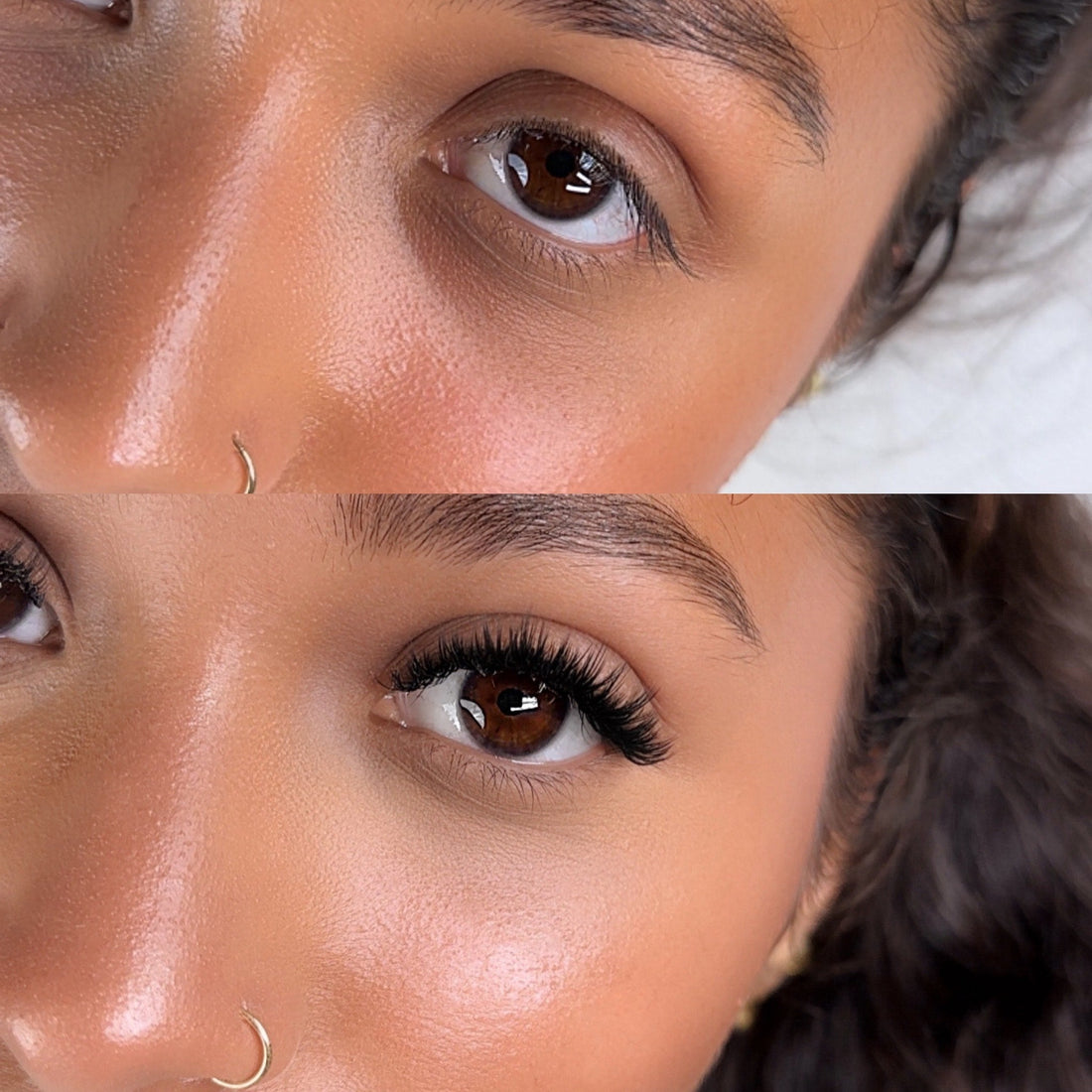This example will focus on a balanced or “natural” map to get you comfortable with beginner lash mapping, taking into account the client's lashes and various lash styles. If you are practicing and are not yet ready to experiment with more advanced styles, this is where to begin!
You can do this on your first model.
1. Analyze Your Client's Eye Shape
-
Start by looking at the client’s eye shapes when they are open and facing you. Are the eyes close-set, wide-set, hooded, round, protruding, almond, or something else? Understanding the eye width and ensuring an ideal eye width between the eyes is crucial for achieving a balanced look. Study our Mapping Mastery course so you can become a pro at determining which eye shape and type is which.
-
Consider the client’s natural lashes—are they short, sparse, or thick and long? This will help you choose appropriate lengths and curls that won’t overburden or damage the client’s lashes. This analysis will help you achieve the desired lash style for your client.
2. Mark the Foam Tape
Once your client’s eyes are comfortably closed and the under-eye foam tape is in place, use a fine-point marker (ideally designed for skin or pads) to outline the sections.
Consider the natural eyelashes' growth direction and characteristics when outlining the sections.
Divide the lash line into segments: inner and outer corners, middle, and outer corner. For a balanced look, mark five sections from the inner corner to the outer corner. This will help you create a precise lash map for a balanced look.
3. Assign Lengths to Each Section
-
Work from shortest to most extended lash lengths, usually starting around 8-9 mm near the inner corner, increasing by 1 mm increments until you reach your designated peak length (e.g., 10-11 mm) in the middle or just after the middle section, then tapering back down near the outer corner.
You might consider a cat eye style for a more dramatic look, which involves longer lengths towards the outer corner.
-
Remember to keep the outer corners balanced—avoid an overly elongated outer corner that might droop the eye shape if that’s not your intended style.
Here’s an example breakdown for a balanced set:
-
Section 1 (inner corner): 8 mm
-
Section 2 (transition): 9 mm
-
Section 3 (center): 10 mm
-
Section 4 (transition): 9 mm
-
Section 5 (outer corner): 8 mm
4. Choose Your Curl
Curl Choice: For beginners, a C-curl is a great starting point—it offers a natural-looking lift many clients love. Different eyelash extension curls can enhance the client's natural lashes in various ways. You might choose CC-curl or D-curl lash curls if you want a more dramatic, eye-opening effect.
Thickness: Here at Light Heart, we only offer 0.03-diameter eyelash extensions, which you can use on any client. These are SO light and can create any style, so you won’t have to choose what diameter you use.
5. Fill in Each Section
Start applying the chosen length in each mapped section, ensuring each natural lash is isolated correctly before placing the lash extension. Using the right lash extensions can significantly enhance your overall appearance.
Remember to place shorter lashes at the inner corners for a natural transition.
Pay attention to your markings so you don’t mix up lengths. This is where lash mapping shines—it keeps you on track!
6. Check Your Work
After you’ve completed the application, gently brush through the lashes to check for any stickies and ensure their natural beauty. Ensuring the eye's width is balanced between both eyes is crucial for a symmetrical look.
Compare both eyes side by side to confirm symmetry and the overall effect of the eyelash extensions. If one side looks fuller or longer, adjust accordingly by adding a few more lashes or swapping lengths.
Best of luck!
Hugs and Kisses,
Maddi

